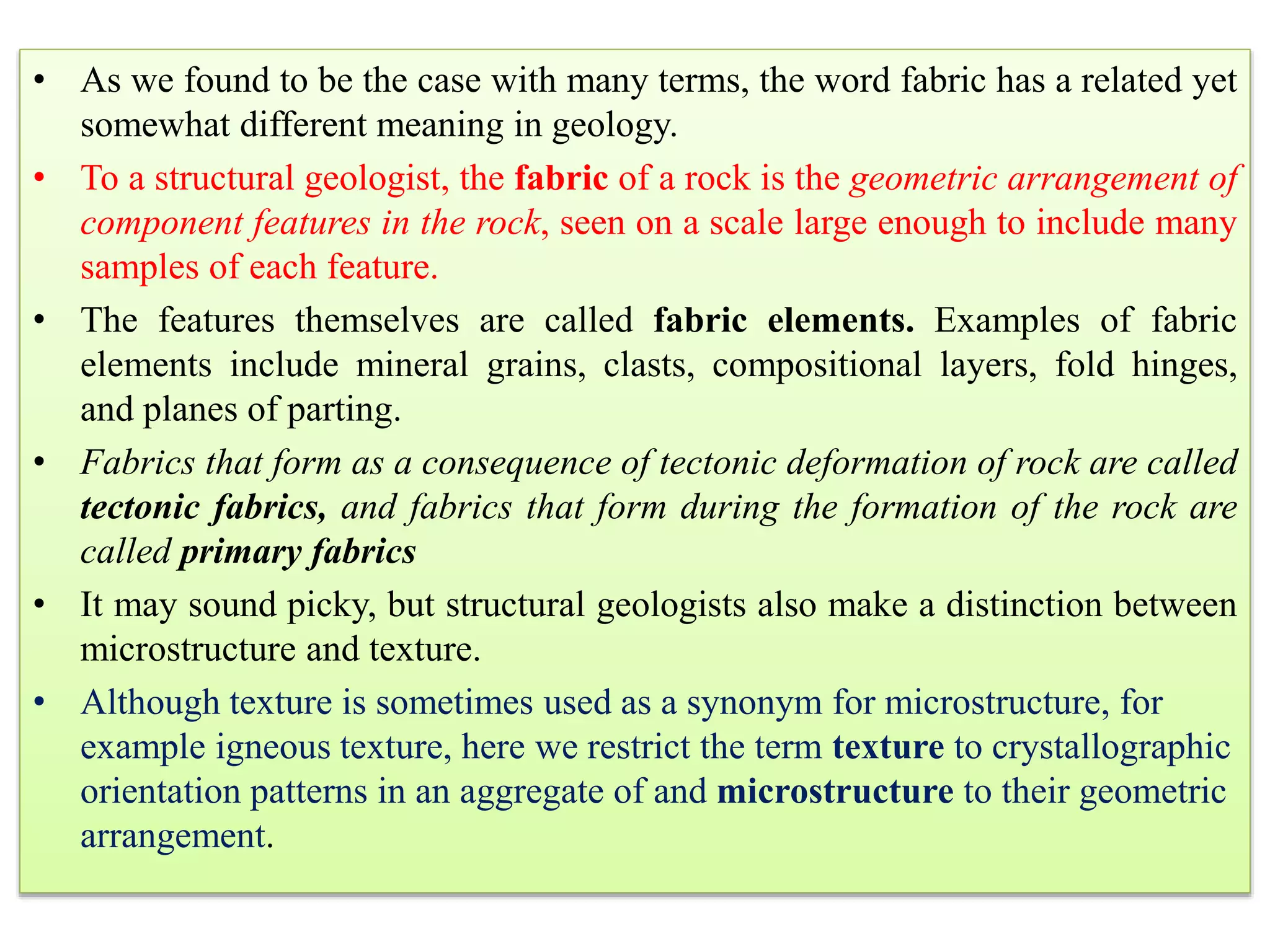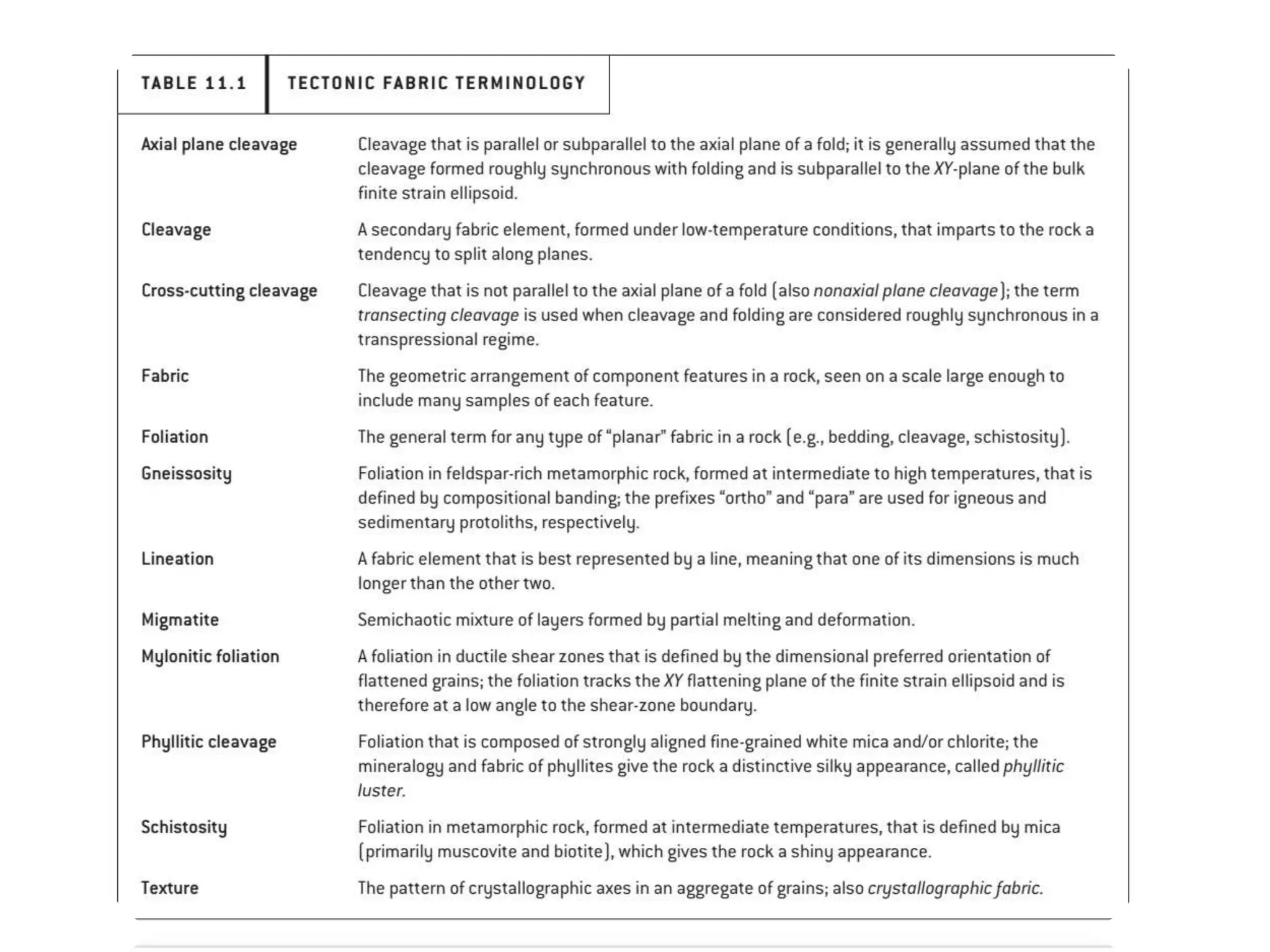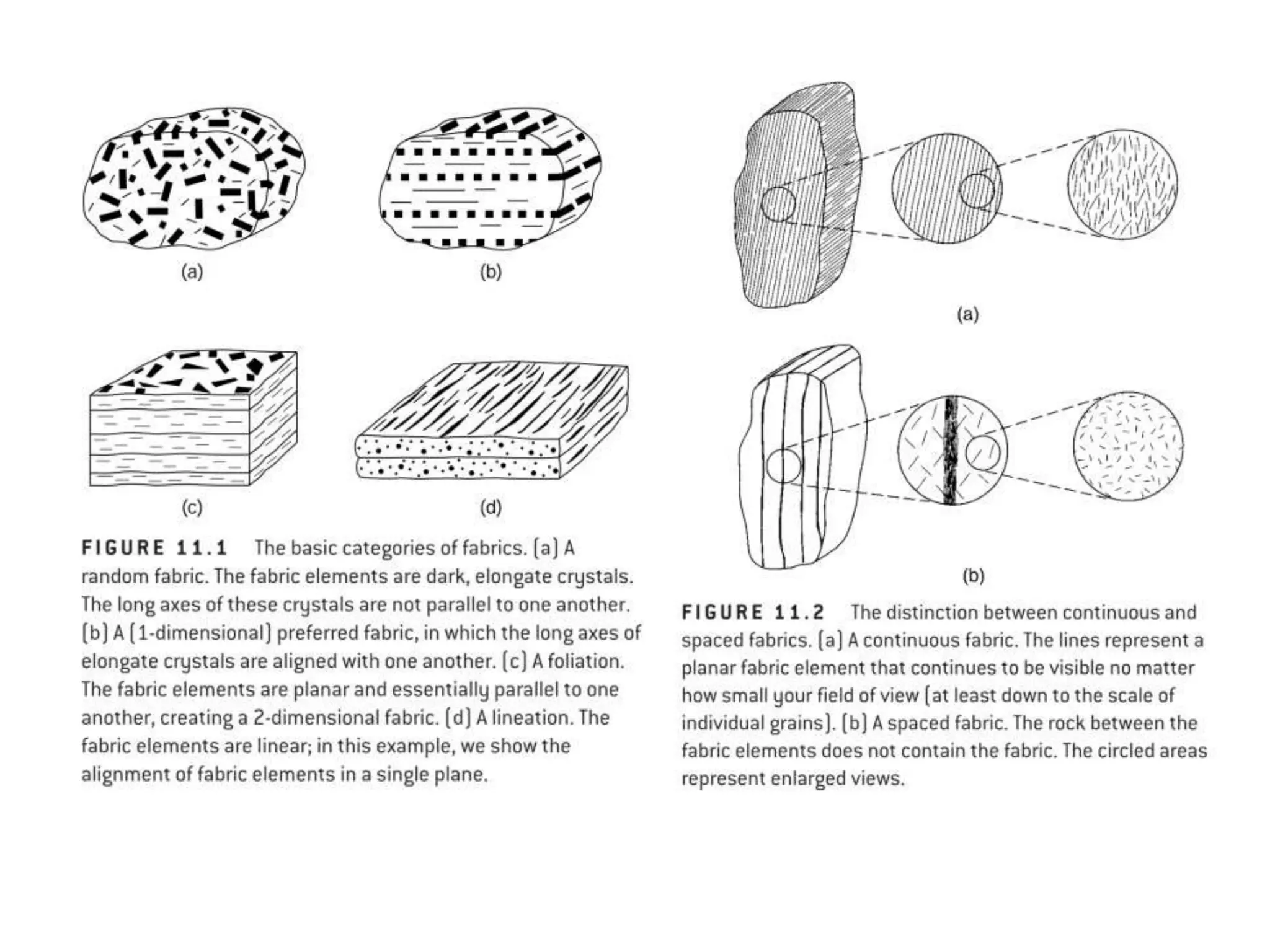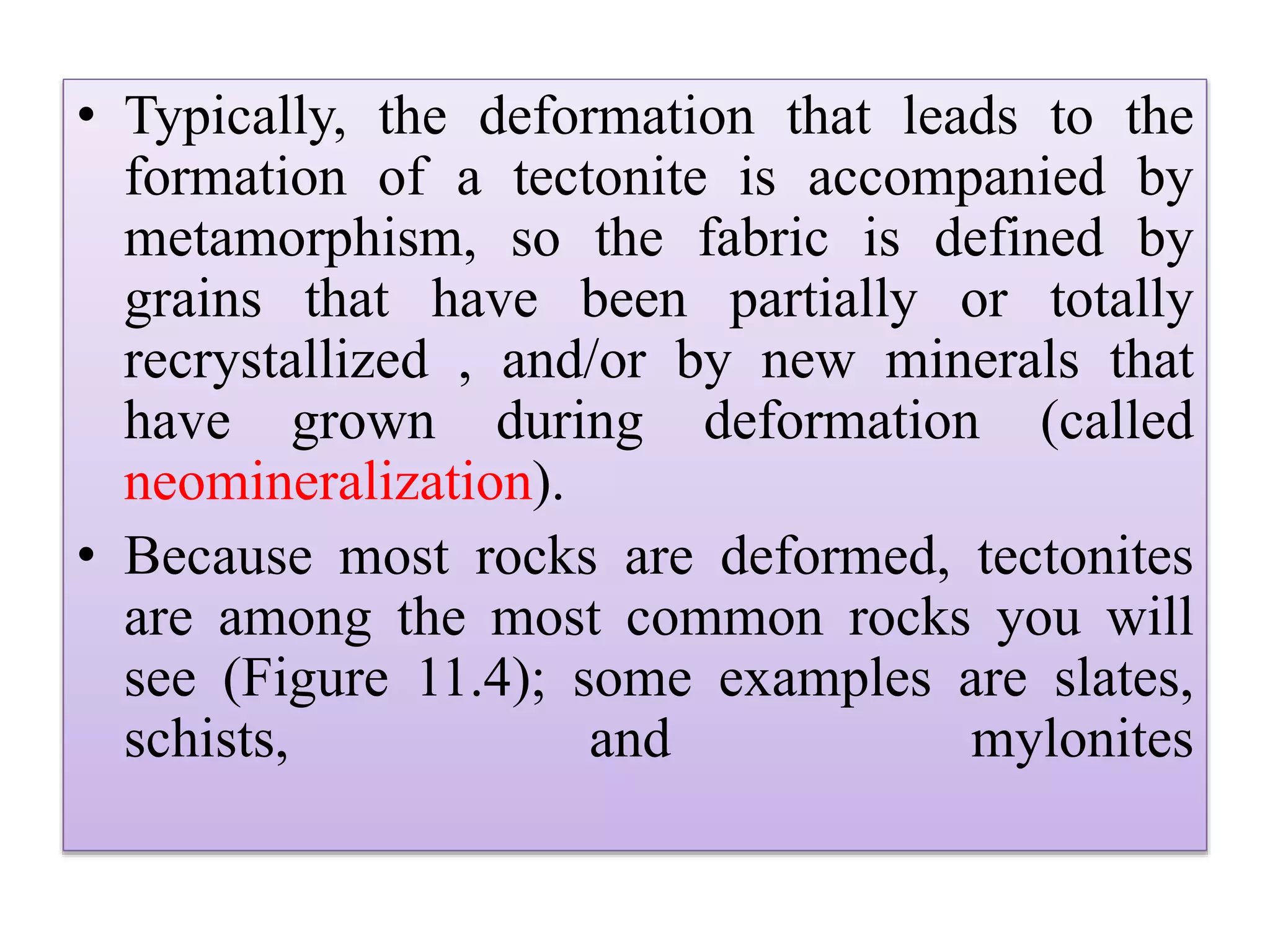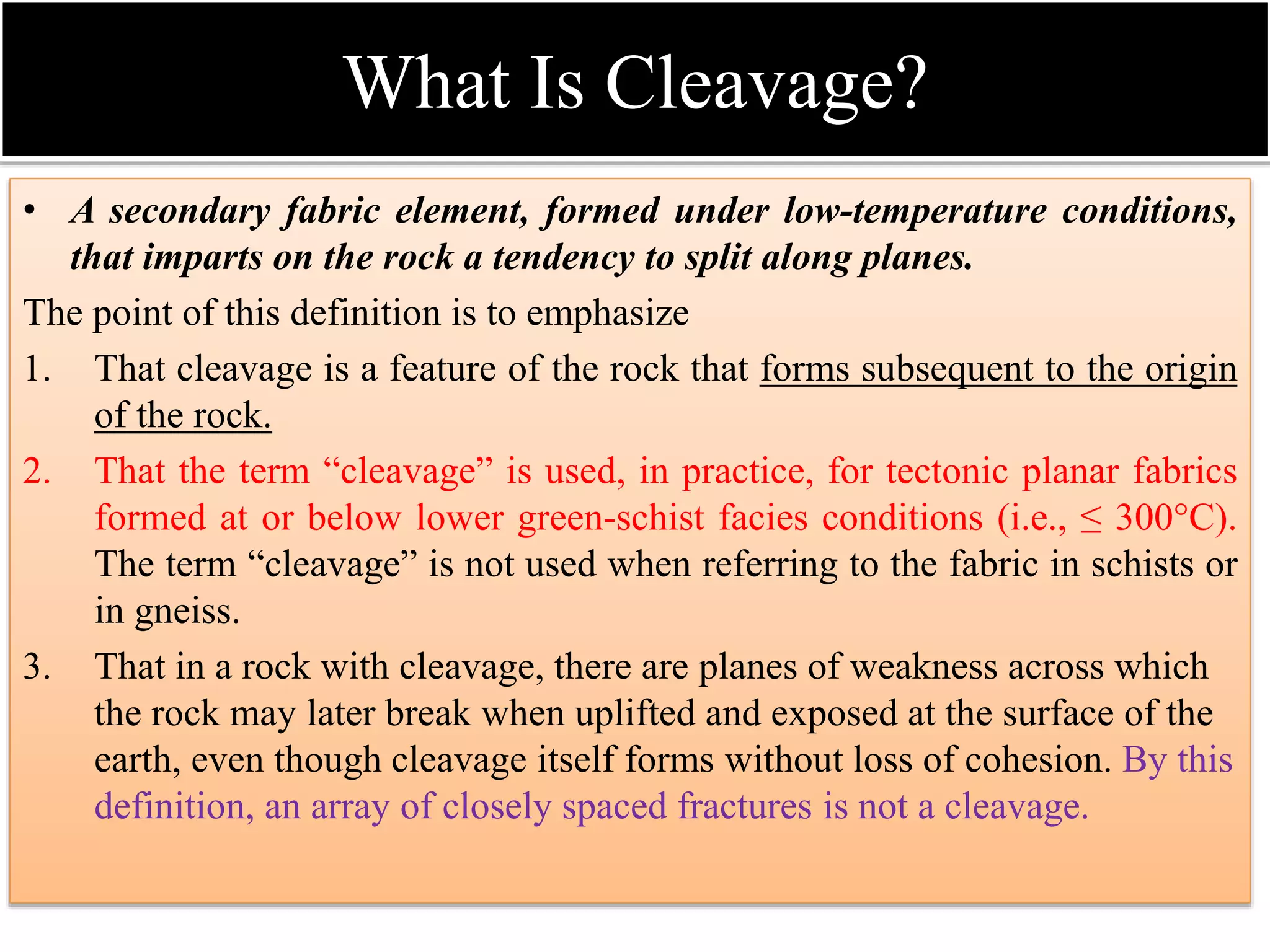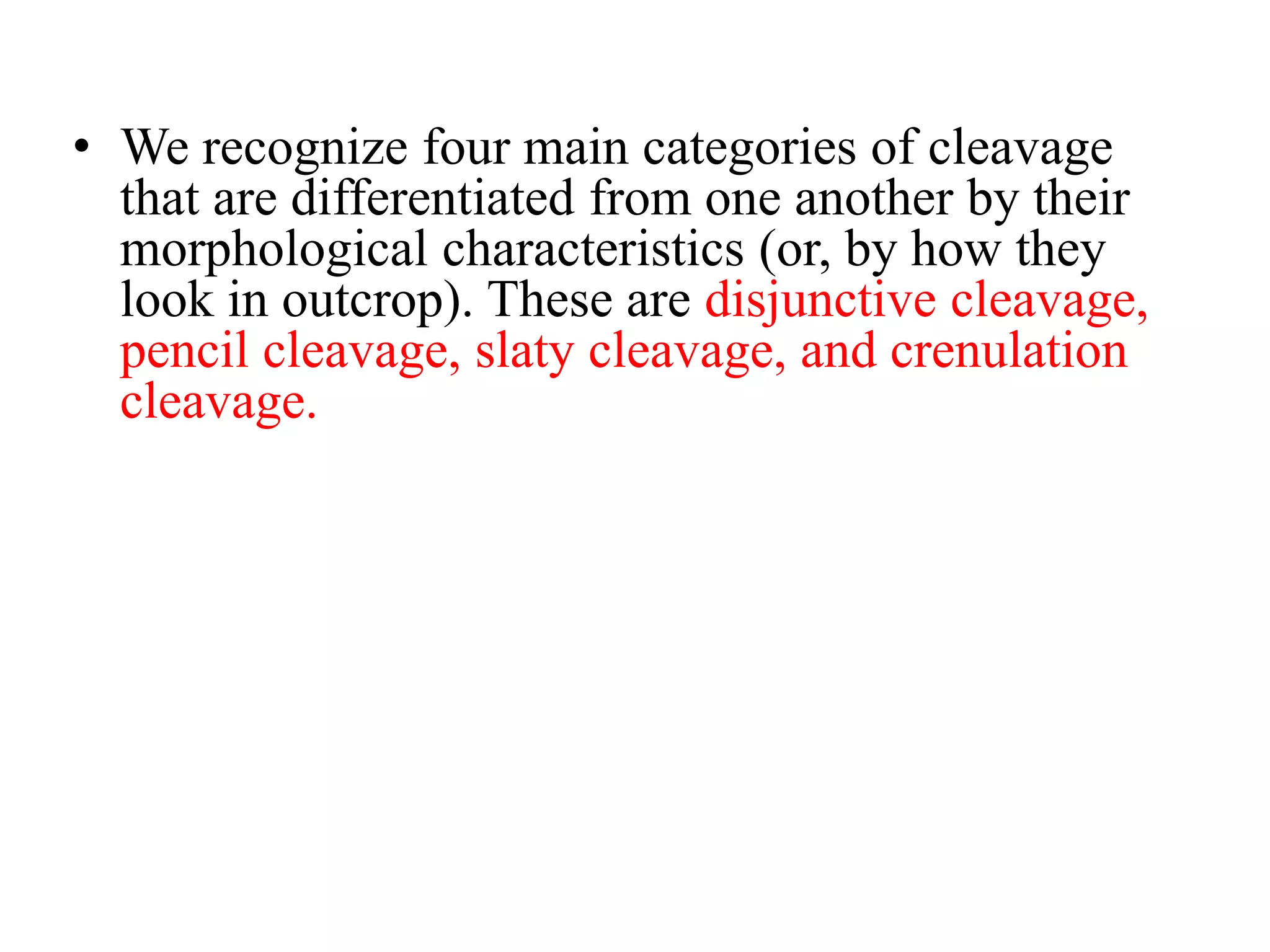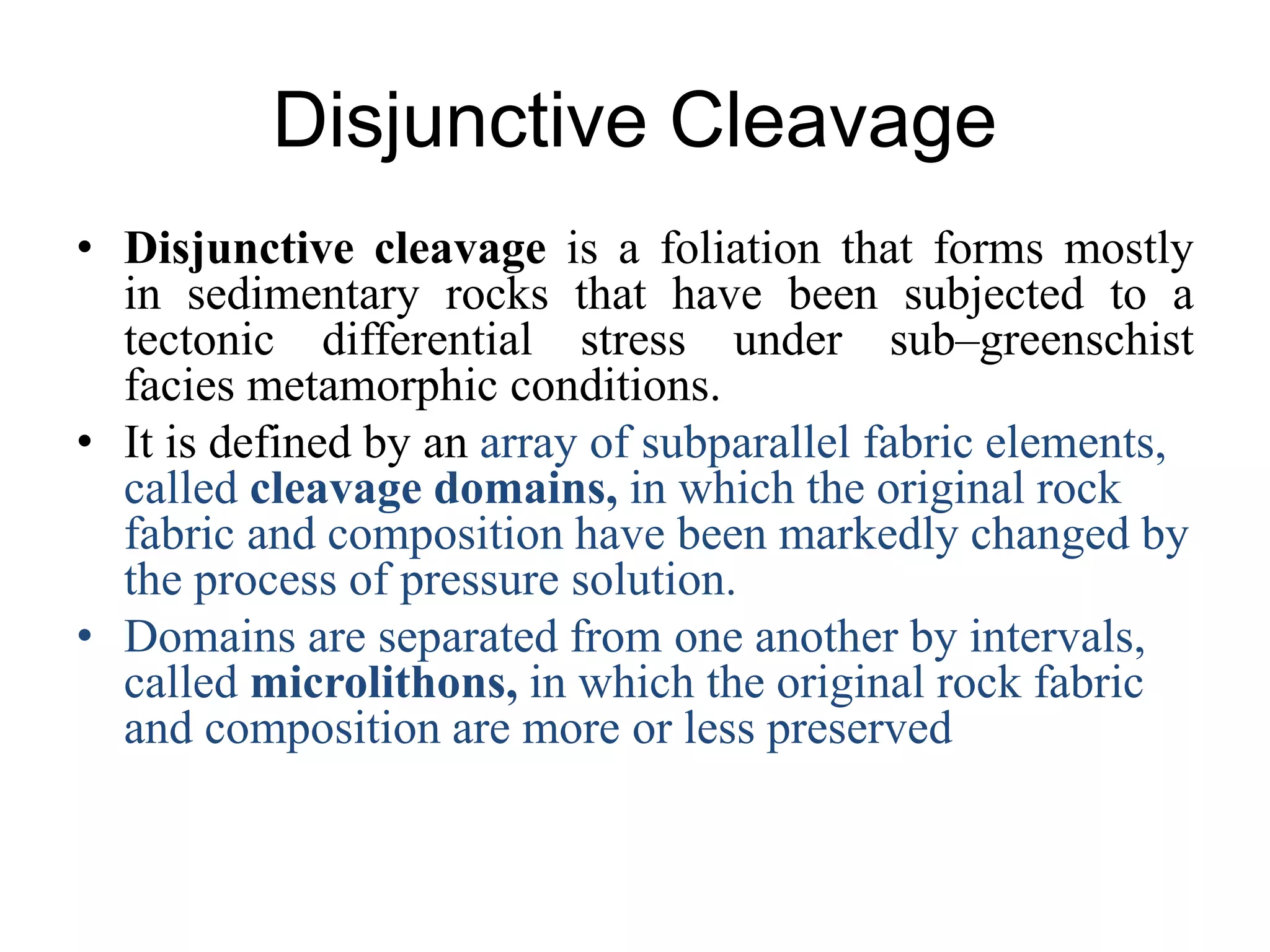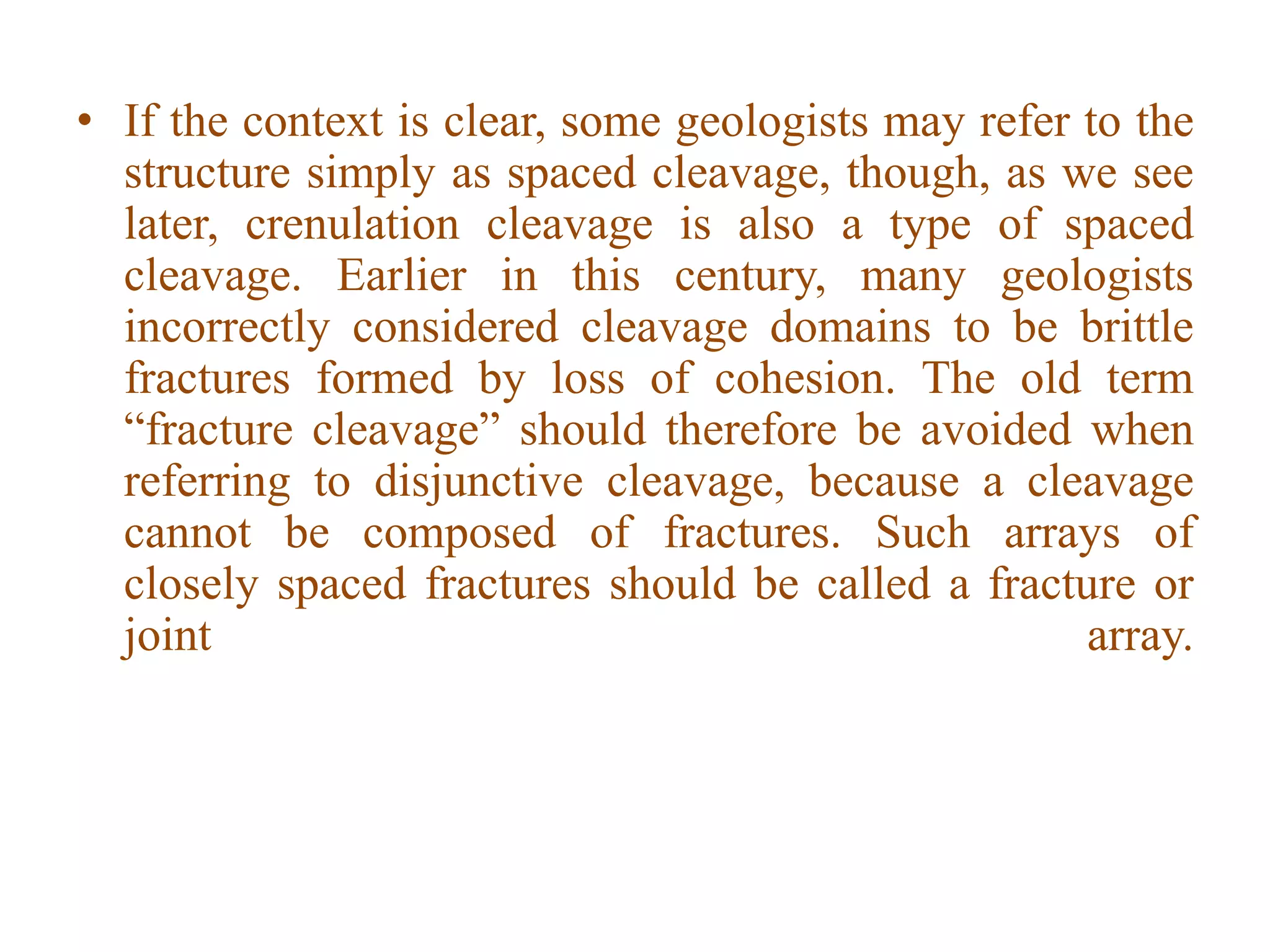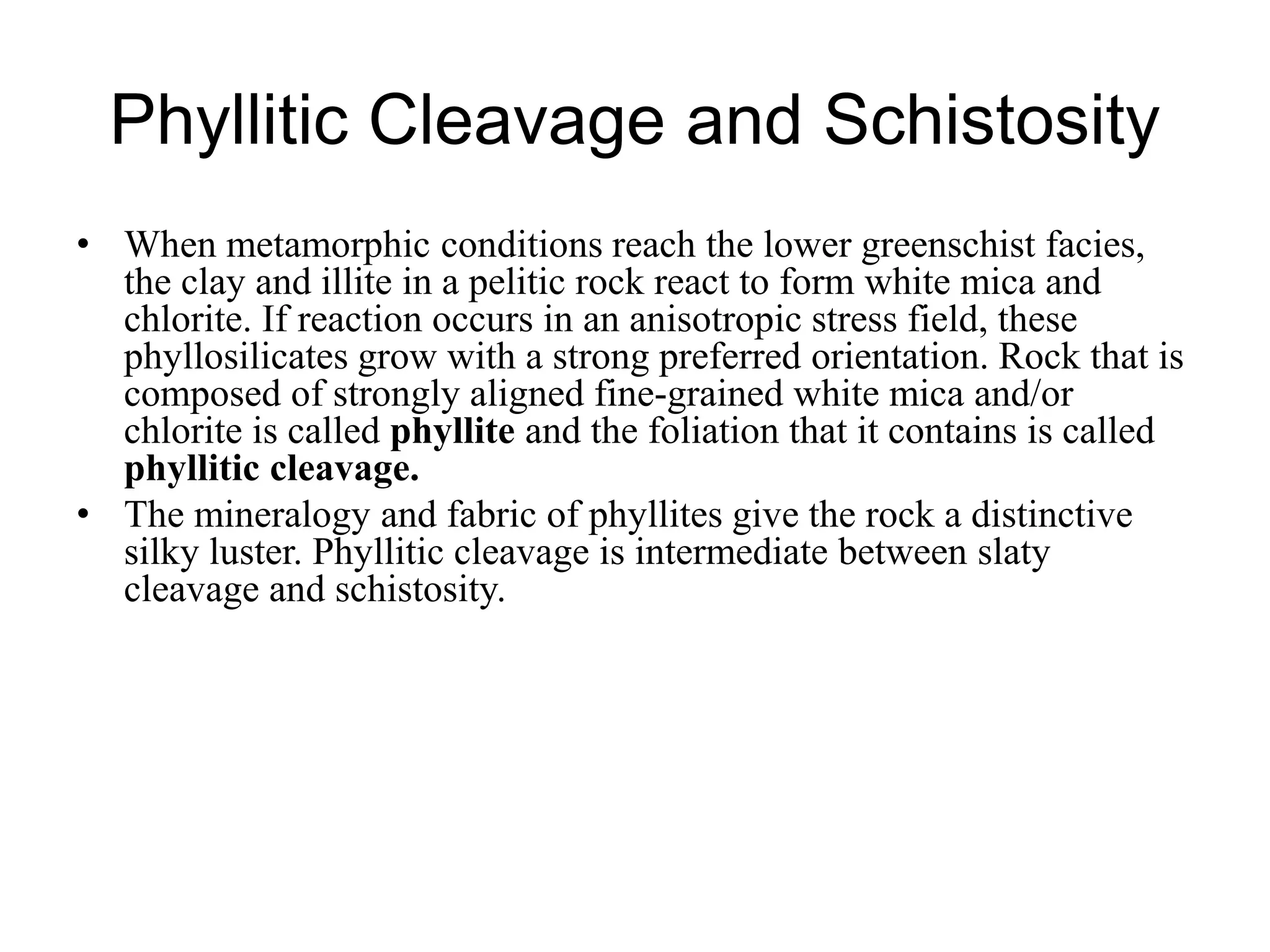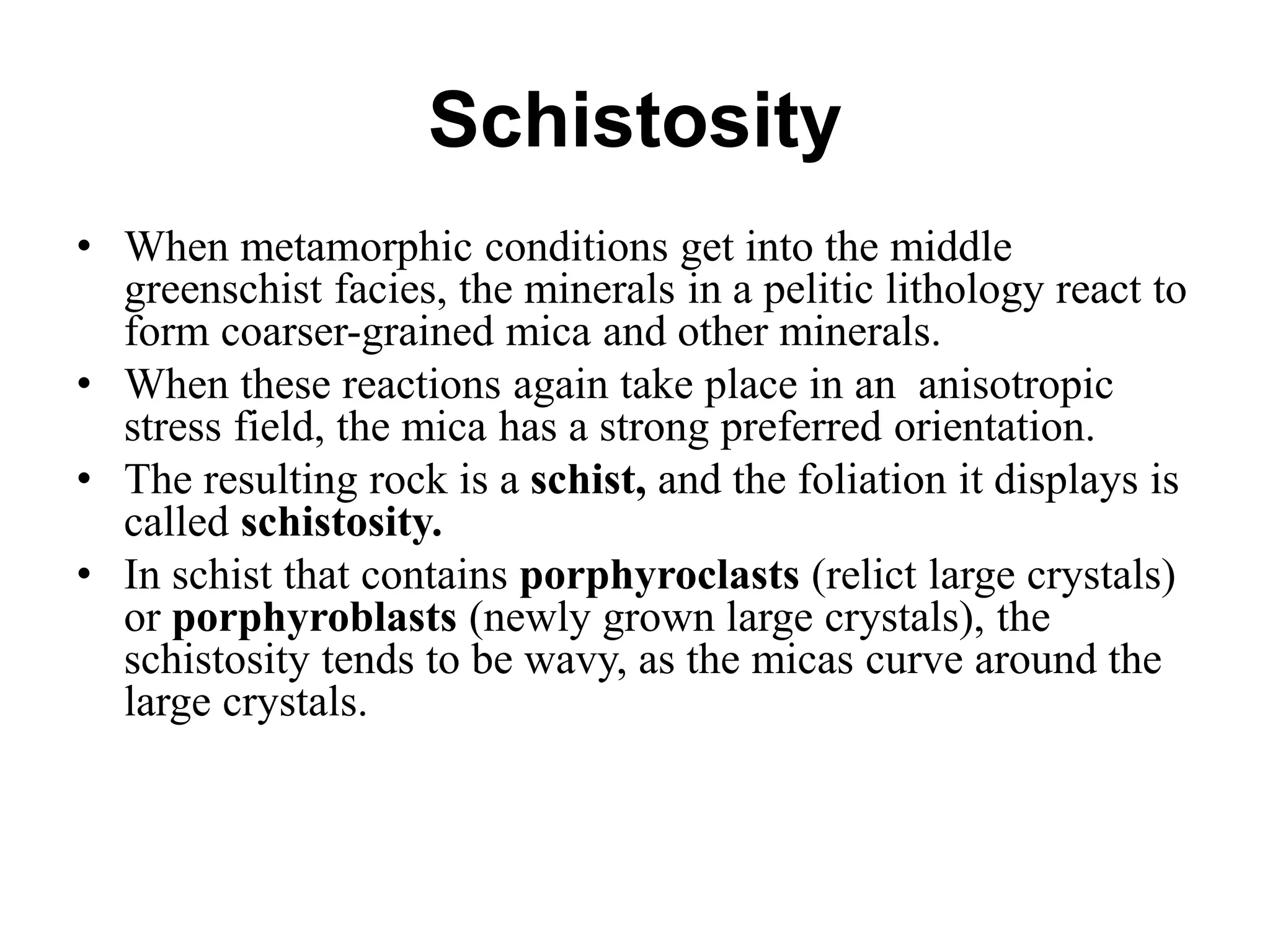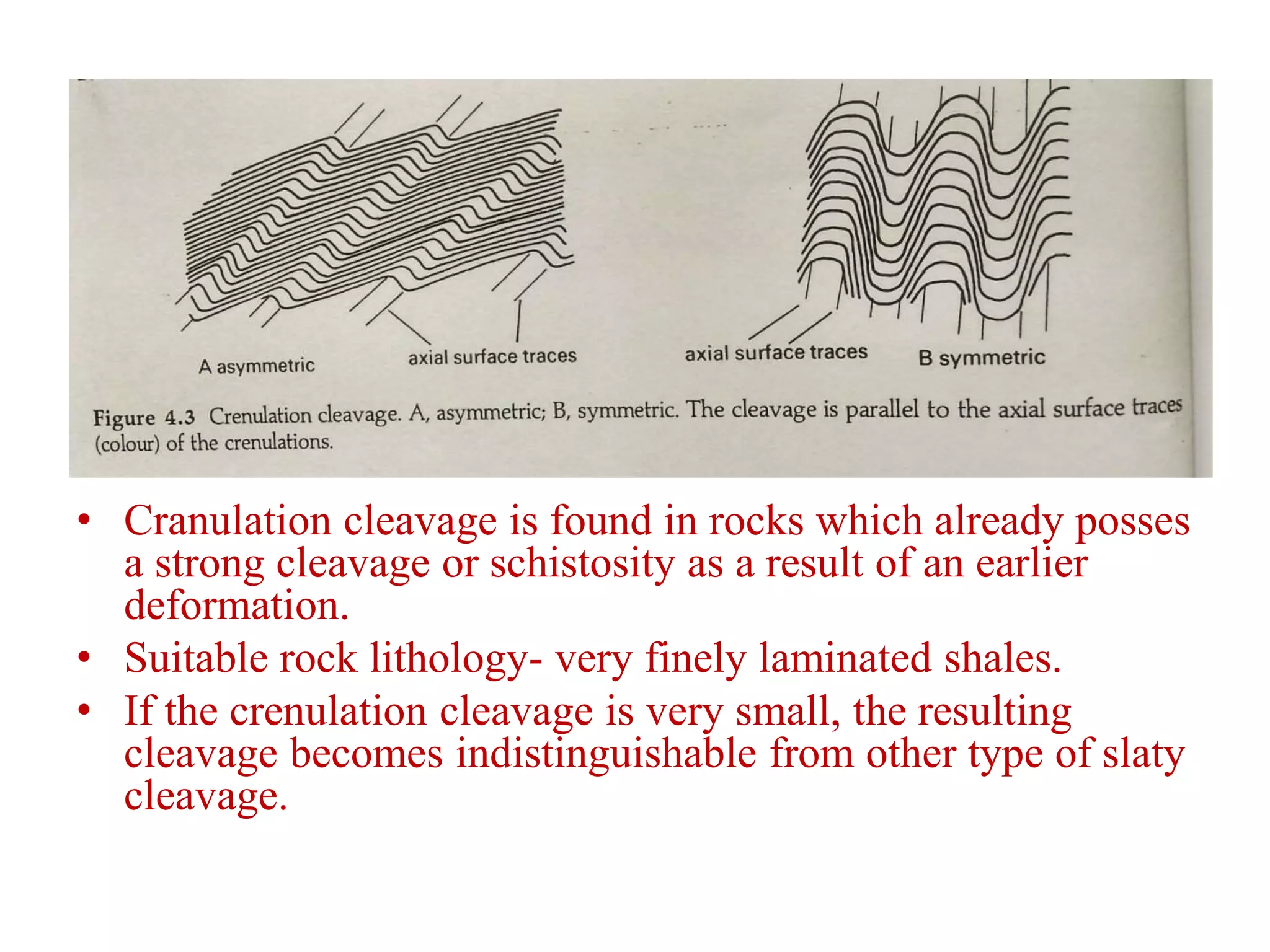The document discusses the concept of 'fabric' in geology, specifically focusing on tectonic fabrics and their elements, such as foliations and lineations. It distinguishes between different types of fabric, including random and preferred fabrics, and explains the impact of deformation on the characteristics of rocks, including the categories of tectonites and types of foliations such as cleavage and schistosity. Additionally, it addresses the terminology used by structural geologists to describe these fabrics and their formation processes under various metamorphic conditions.


